Study on the SPCC and CFRTP Hybrid Joint Performance Produced with Additional Nylon-6 Interlayer by Ultrasonic Plastic Welding
Abstract
:1. Introduction
2. Materials and Experimental Methods
2.1. Materials
2.1.1. Cold Rolled Steel (SPCC)
2.1.2. CFRTP Chopped Sheet
2.1.3. Nylon-6 (PA6) Film
2.2. Experimental Methods
2.2.1. CFRTP-SPCC Joint
2.2.2. Ultrasonic Plastic Welding System
2.2.3. Design of the Experiments
2.3. Characterization
2.3.1. Joint Microstructure Analysis
2.3.2. Mechanical Testing
3. Results and Discussion
3.1. Effect of UPW Energy at Room Temperature
3.2. Effect of the Co-Action of Preheating Temperature and Welding Energy
4. Conclusions
Author Contributions
Funding
Institutional Review Board Statement
Informed Consent Statement
Data Availability Statement
Conflicts of Interest
References
- Iwata, K.; Suzuki, A.; Kim, S.-G.; Takata, N.; Kobashi, M. Enhancing the solid-state joinability of A5052 and CFRTP via an additively manufactured micro-structure. J. Mater. Process. Tech. 2022, 306, 117629. [Google Scholar] [CrossRef]
- Li, C.; Guo, R.; Xian, G.; Li, H. Effects of elevated temperature, hydraulic pressure and fatigue loading on the property evolution of a carbon/glass fiber hybrid rod. Polym. Test. 2020, 90, 106761. [Google Scholar] [CrossRef]
- Vahabi, H.; Kandola, B.K.; Saeb, M.R. Flame Retardancy Index for Thermoplastic Composites. Polymers 2019, 11, 407. [Google Scholar] [CrossRef] [PubMed] [Green Version]
- Wu, J.; Li, C.; Hailatihan, B.; Mi, L.; Baheti, Y.; Yan, Y. Effect of the Addition of Thermoplastic Resin and Composite on Mechanical and Thermal Properties of Epoxy Resin. Polymers 2022, 14, 1087. [Google Scholar] [CrossRef]
- Wang, H.; Huang, B.; Li, J.; Li, N.; Liu, L. Welding and Riveting Hybrid Bonding of 6061 Al and Carbon Fiber Reinforced Composites. Polymers 2021, 14, 99. [Google Scholar] [CrossRef]
- Liu, Z.; Li, Y.; Wang, Y.; Epureanu, B.I.; Banu, M. Nonlinear friction behavior in ultrasonic welding of aluminum alloy to carbon fiber reinforced PA6 composite. J. Mater. Process. Tech. 2021, 296, 117230. [Google Scholar] [CrossRef]
- André, N.M.; Goushegir, S.M.; dos Santos, J.F.; Canto, L.B.; Amancio-Filho, S.T. Friction Spot Joining of aluminum alloy 2024-T3 and carbon-fiber-reinforced poly(phenylene sulfide) laminate with additional PPS film interlayer: Microstructure, mechanical strength and failure mechanisms. Compos. Part B Eng. 2016, 94, 197–208. [Google Scholar] [CrossRef]
- Zou, Q.; Jiao, J.; Xu, J.; Sheng, L.; Zhang, Y.; Ouyang, W.; Xu, Z.; Zhang, M.; Xia, H.; Tian, R.; et al. Effects of laser hybrid interfacial pretreatment on enhancing the carbon fiber reinforced thermosetting composites and TC4 alloy heterogeneous joint. Mater. Today Commun. 2022, 30, 103142. [Google Scholar] [CrossRef]
- Galinska, A. Mechanical Joining of Fibre Reinforced Polymer Composites to Metals-A Review. Part I: Bolted Joining. Polymers 2020, 12, 2252. [Google Scholar] [CrossRef] [PubMed]
- Lambiase, F.; Scipioni, S.I.; Lee, C.J.; Ko, D.C.; Liu, F. A State-of-the-Art Review on Advanced Joining Processes for Metal-Composite and Metal-Polymer Hybrid Structures. Materials 2021, 14, 1890. [Google Scholar] [CrossRef]
- Wang, Q.; Jia, Z.-Y.; Zhang, B.-Y.; Gao, D.-L.; Ma, Y.; Liu, J.-Y. Influence of processing parameters on joint shear performance in laser direct joining of CFRTP and aluminum alloy. Mater. Des. 2021, 209, 109996. [Google Scholar] [CrossRef]
- Jahn, J.; Weeber, M.; Boehner, J.; Steinhilper, R. Assessment strategies for composite-metal joining technologies—A review. Proc. Cirp. 2016, 50, 689–694. [Google Scholar] [CrossRef]
- Zhang, D.W.; Zhang, Q.; Fan, X.G.; Zhao, S.D. Review on Joining Process of Carbon Fiber-reinforced Polymer and Metal: Applications and Outlook. Rare Metal. Mat. Eng. 2019, 48, 44–54. [Google Scholar]
- Reisgen, U.; Schiebahn, A.; Lotte, J.; Hopmann, C.; Schneider, D.; Neuhaus, J. Innovative joining technology for the production of hybrid components from FRP and metals. J. Mater. Process. Tech. 2020, 282, 116674. [Google Scholar] [CrossRef]
- Feng, Z.; Zhao, H.; Tan, C.; Zhang, X.; Chen, B.; Song, X. Nanosecond laser ablation for improving the strength of CFRTP and aluminum alloy adhesively bonded joints. Compos. Struct. 2021, 274, 114369. [Google Scholar] [CrossRef]
- Kim, J.-H.; Lee, C.-J.; Min, K.D.; Hwang, B.-U.; Kang, D.G.; Choi, D.H.; Joo, J.; Jung, S.-B. Intense pulsed light surface treatment for improving adhesive bonding of aluminum and carbon fiber reinforced plastic (CFRP). Compos. Struct. 2021, 258, 113364. [Google Scholar] [CrossRef]
- Pramanik, A.; Basak, A.K.; Dong, Y.; Sarker, P.K.; Uddin, M.S.; Littlefair, G.; Dixit, A.R.; Chattopadhyaya, S. Joining of carbon fibre reinforced polymer (CFRP) composites and aluminium alloys—A review. Compos. Part A. Appl. Sci. Manufactur. 2017, 101, 1–29. [Google Scholar] [CrossRef] [Green Version]
- Zhou, X.; Zhao, Y.; Chen, X.; Liu, Z.; Li, J.; Fan, Y. Fabrication and mechanical properties of novel CFRP/Mg alloy hybrid laminates with enhanced interface adhesion. Mater. Des. 2021, 197, 109251. [Google Scholar] [CrossRef]
- Herrmann, C.; Dewulf, W.; Hauschild, M.; Kaluza, A.; Kara, S.; Skerlos, S. Life cycle engineering of lightweight structures. CIRP Ann. 2018, 67, 651–672. [Google Scholar] [CrossRef]
- Frederick, H.; Li, W.; Palardy, G. Disassembly Study of Ultrasonically Welded Thermoplastic Composite Joints via Resistance Heating. Materials 2021, 14, 2521. [Google Scholar] [CrossRef]
- Schwarz, A.E.; Ligthart, T.N.; Godoi Bizarro, D.; De Wild, P.; Vreugdenhil, B.; van Harmelen, T. Plastic recycling in a circular economy; determining environmental performance through an LCA matrix model approach. Waste Manag. 2021, 121, 331–342. [Google Scholar] [CrossRef] [PubMed]
- Esteves, J.V.; Goushegir, S.M.; dos Santos, J.F.; Canto, L.B.; Hage, E.; Amancio-Filho, S.T. Friction spot joining of aluminum AA6181-T4 and carbon fiber-reinforced poly(phenylene sulfide): Effects of process parameters on the microstructure and mechanical strength. Mater. Des. 2015, 66, 437–445. [Google Scholar] [CrossRef] [Green Version]
- Lionetto, F.; Mele, C.; Leo, P.; D’Ostuni, S.; Balle, F.; Maffezzoli, A. Ultrasonic spot welding of carbon fiber reinforced epoxy composites to aluminum: Mechanical and electrochemical characterization. Compos. Part B Eng. 2018, 144, 134–142. [Google Scholar] [CrossRef]
- André, N.M.; Goushegir, S.M.; dos Santos, J.F.; Canto, L.B.; Amancio-Filho, S.T. Influence of the interlayer film thickness on the mechanical performance of AA2024-T3/CF-PPS hybrid joints produced by friction spot joining. Weld. Int. 2017, 32, 1–10. [Google Scholar] [CrossRef]
- Nagatsuka, K.; Yoshida, S.; Tsuchiya, A.; Nakata, K. Direct joining of carbon-fiber–reinforced plastic to an aluminum alloy using friction lap joining. Compos. Part B Eng. 2015, 73, 82–88. [Google Scholar] [CrossRef]
- Gao, Z.; Peng, S.; Sun, J.; Yao, L.; Qiu, Y. The influence of moisture on atmospheric pressure plasma etching of PA6 films. Curr. Appl. Phys. 2010, 10, 230–234. [Google Scholar] [CrossRef]
- Tian, Z.; Zhi, Q.; Zhang, G.; Tan, X.; Lu, L.; Wang, P.; Liu, Z. Influence of Pre-Pressing Ring on the Weld Quality of Ultrasonically Welded Short Carbon Fiber Reinforced Nylon 6 Composite. Polymers 2022, 14, 3115. [Google Scholar] [CrossRef]
- Unnikrishnan, T.G.; Kavan, P. A review study in ultrasonic-welding of similar and dissimilar thermoplastic polymers and its composites. Mater. Today Proc. 2021, 56, 3294–3300. [Google Scholar] [CrossRef]
- Yang, Y.; Liu, Z.; Wang, Y.; Li, Y. Numerical Study of Contact Behavior and Temperature Characterization in Ultrasonic Welding of CF/PA66. Polymers 2022, 14, 683. [Google Scholar] [CrossRef]
- Balle, F.; Huxhold, S.; Emrich, S.; Wagner, G.; Kopnarski, M.; Eifler, D. Influence of Heat Treatments on the Mechanical Properties of Ultrasonic Welded AA 2024/CF-PA66-Joints. Adv. Eng. Mater. 2013, 15, 837–845. [Google Scholar] [CrossRef]



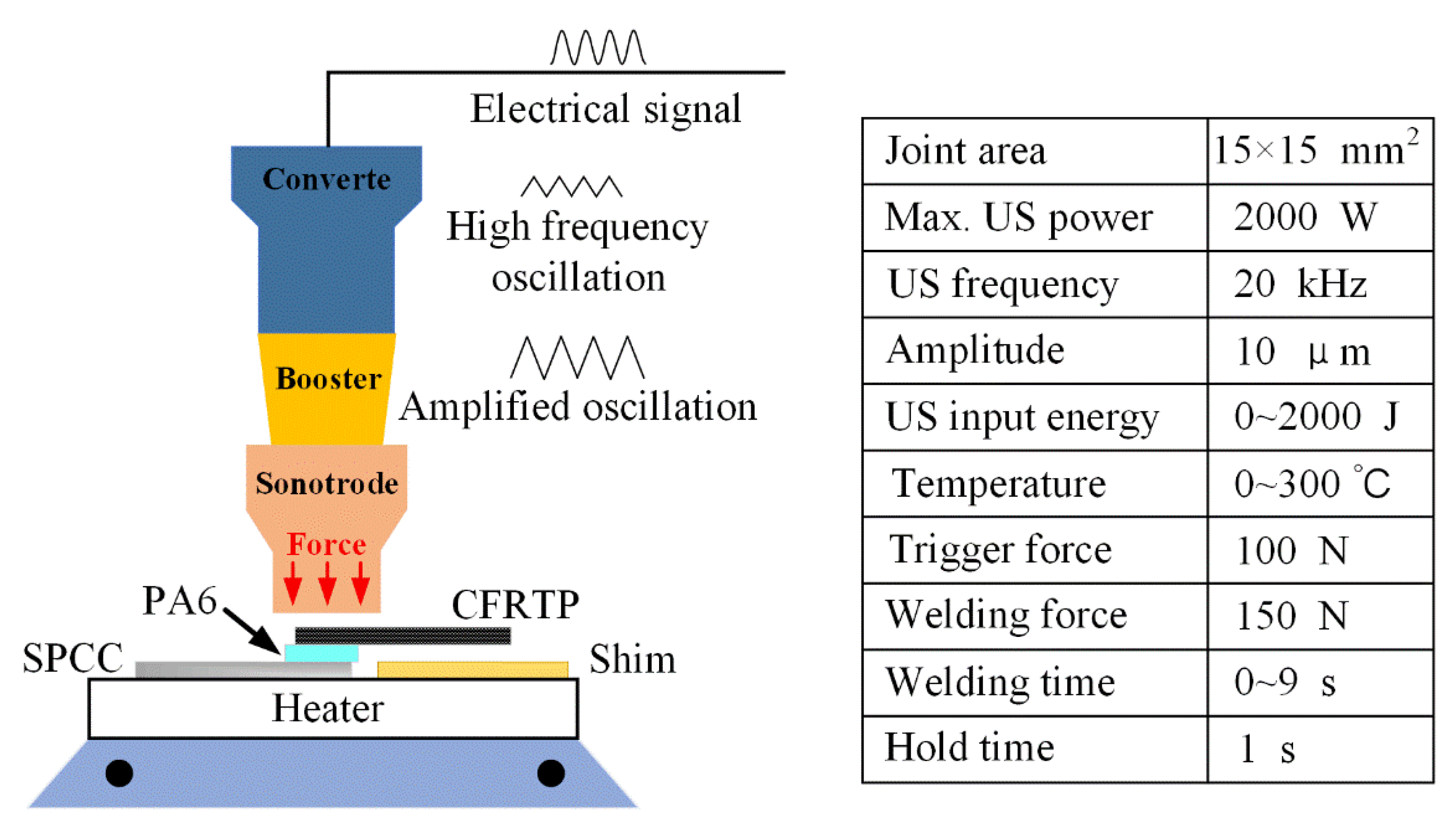
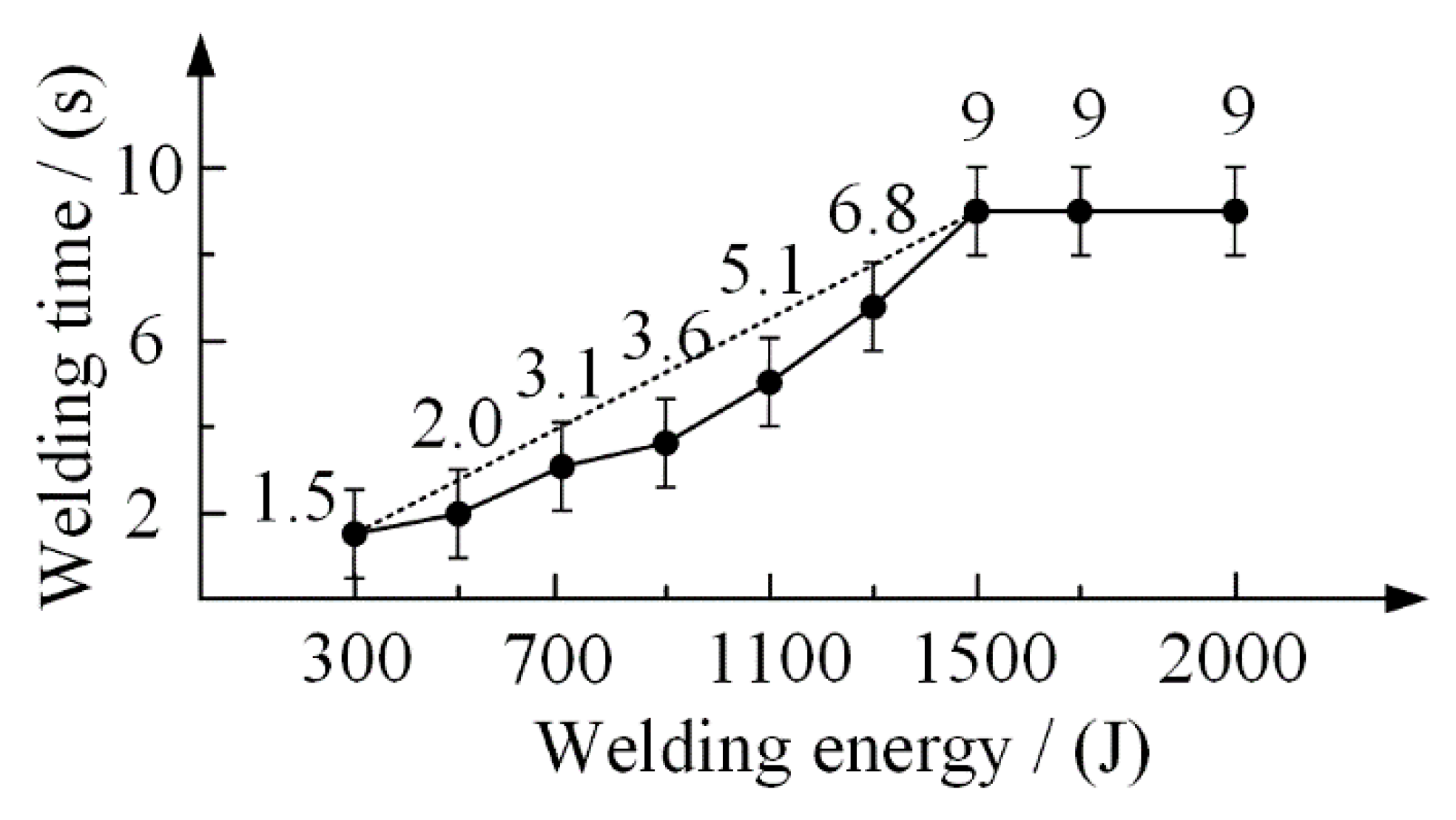
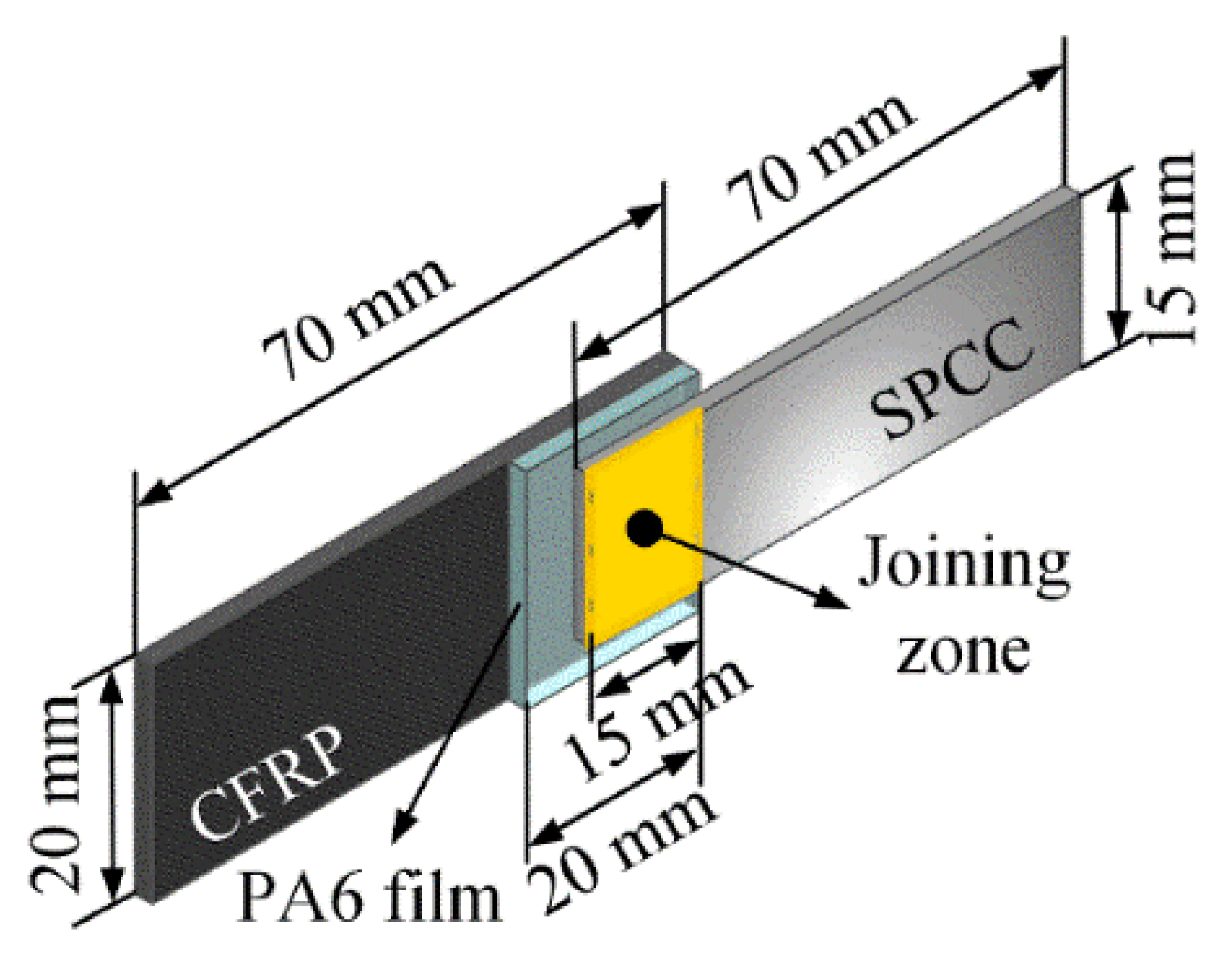








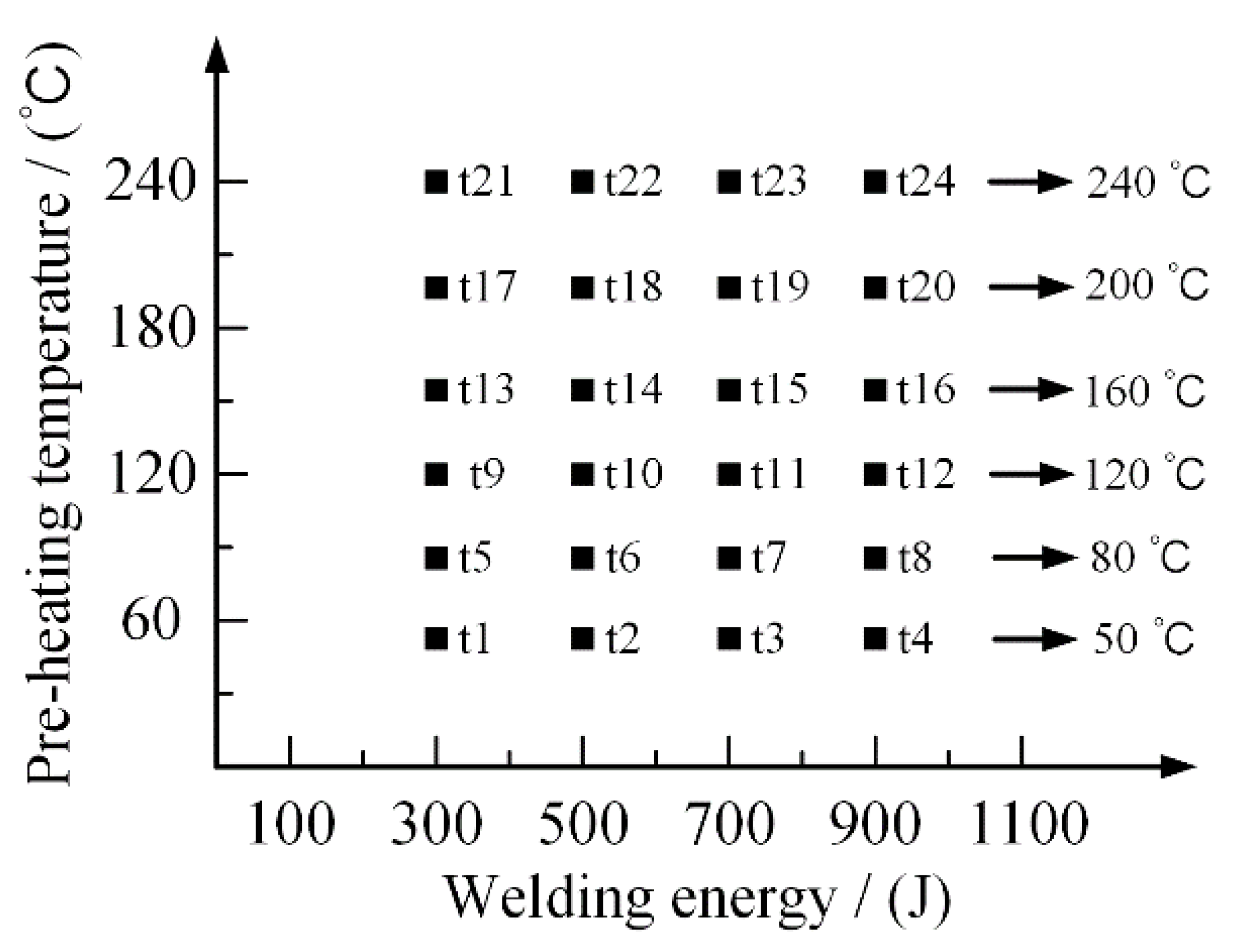

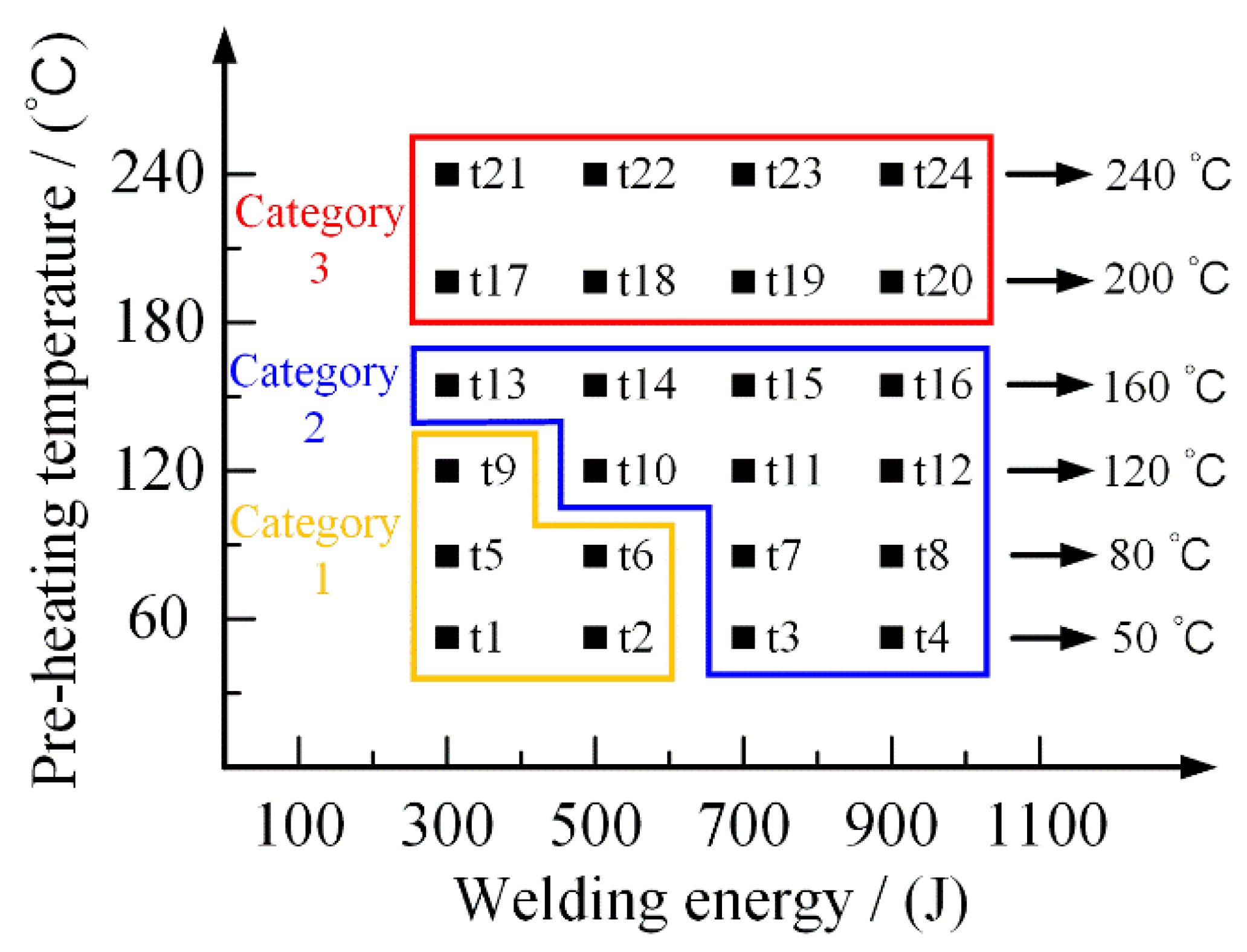



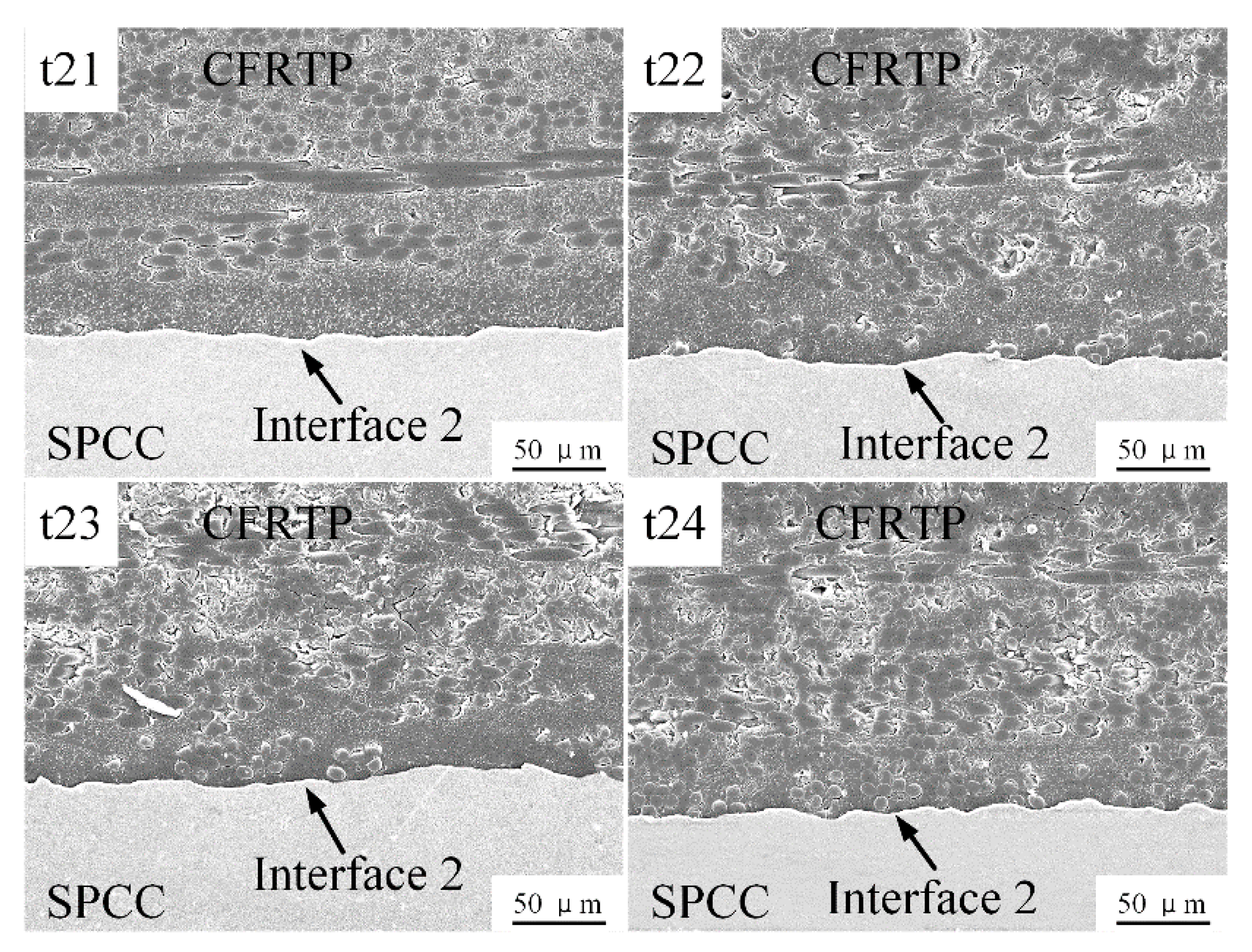

| Fiber Volume Content | Resin Content | Thickness | Mass |
|---|---|---|---|
| 50 (%) | 39 (wt.%) | 500 μm | 500 g/m2 |
| Chemical Formula | Density | Melting Point | Autoignition Temperature |
|---|---|---|---|
| (C6H11NO)n | 1.084 g/mL | 220 °C | 434 °C |
Publisher’s Note: MDPI stays neutral with regard to jurisdictional claims in published maps and institutional affiliations. |
© 2022 by the authors. Licensee MDPI, Basel, Switzerland. This article is an open access article distributed under the terms and conditions of the Creative Commons Attribution (CC BY) license (https://creativecommons.org/licenses/by/4.0/).
Share and Cite
Wang, T.; Yasuda, K.; Nishikawa, H. Study on the SPCC and CFRTP Hybrid Joint Performance Produced with Additional Nylon-6 Interlayer by Ultrasonic Plastic Welding. Polymers 2022, 14, 5235. https://doi.org/10.3390/polym14235235
Wang T, Yasuda K, Nishikawa H. Study on the SPCC and CFRTP Hybrid Joint Performance Produced with Additional Nylon-6 Interlayer by Ultrasonic Plastic Welding. Polymers. 2022; 14(23):5235. https://doi.org/10.3390/polym14235235
Chicago/Turabian StyleWang, Tai, Kiyokazu Yasuda, and Hiroshi Nishikawa. 2022. "Study on the SPCC and CFRTP Hybrid Joint Performance Produced with Additional Nylon-6 Interlayer by Ultrasonic Plastic Welding" Polymers 14, no. 23: 5235. https://doi.org/10.3390/polym14235235
APA StyleWang, T., Yasuda, K., & Nishikawa, H. (2022). Study on the SPCC and CFRTP Hybrid Joint Performance Produced with Additional Nylon-6 Interlayer by Ultrasonic Plastic Welding. Polymers, 14(23), 5235. https://doi.org/10.3390/polym14235235








